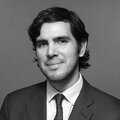I. Intro
In every age, police forces gain access to new tools and technologies that may advance their mission to prevent and combat crime. The deployment of new technologies requires an understanding of their impacts on the fundamental rights of the communities that police serve and the development of safeguards to prevent abuse. The New York Police Department (NYPD), however, has purchased and used new surveillance technologies while attempting to keep the public and the City Council in the dark.
This chart provides an overview of the NYPD’s surveillance technology, based on publicly available information, as well as the potential impact of the use of these tools.
Because the police insist on complete secrecy, however, the picture is far from complete. The NYPD should not be allowed to prevent the public and its elected representatives from learning basic information necessary on these technologies, which is critical to effective oversight and the establishment of safeguards to protect the privacy and civil liberties of New Yorkers. The POST Act, introduced by Council Member Vanessa Gibson and currently supported by 28 co-sponsors, would require NYPD to take these steps.



